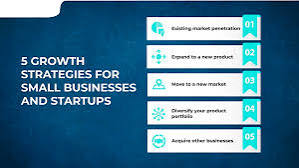In today’s competitive business environment, pushing your products to larger audiences requires a multifaceted approach. Leveraging the right resources and strategies can significantly enhance your market reach, fostering growth and driving revenue. Here, we explore key methods to effectively expand your product’s presence.
Harnessing Digital Marketing Channels
Digital marketing is a cornerstone for reaching broader audiences. By utilizing various online platforms, businesses can effectively engage with potential customers and create meaningful connections. Social media marketing, for instance, allows companies to tap into vast networks of users, tailoring content to specific demographics and interests. Platforms like Facebook, Instagram, and LinkedIn offer robust advertising tools that enable precise targeting and detailed analytics, providing invaluable insights into campaign performance and audience behavior.
Email marketing remains a powerful tool as well, offering direct communication with a curated audience. By segmenting email lists and personalizing content, businesses can nurture leads and foster customer loyalty. Additionally, influencer marketing has emerged as a potent strategy, leveraging the credibility and reach of industry influencers to endorse products and expand visibility.
Optimizing Search Engine Presence
Search engine optimization (SEO) is critical for increasing product visibility online. An effective SEO playbook involves a series of tactics designed to enhance your website’s ranking on search engine results pages (SERPs). This includes keyword research to identify terms your potential customers are searching for, on-page optimization to ensure your site is search engine friendly, and building high-quality backlinks to improve domain authority.
Content marketing is a key component of SEO, driving organic traffic through valuable, relevant content. By publishing blogs, articles, and other content that addresses the needs and interests of your target audience, you can position your brand as an authority in your industry. Moreover, local SEO tactics, such as optimizing your Google My Business profile, can drive traffic from geographically relevant searches, crucial for businesses with a local presence.
Leveraging Paid Advertising
Paid advertising offers immediate visibility and can be a powerful complement to organic marketing efforts. Pay-per-click (PPC) advertising on platforms like Google Ads and Bing Ads allows businesses to appear at the top of search results for targeted keywords, driving high-intent traffic to their sites. Social media advertising, as mentioned earlier, also provides extensive targeting options, ensuring your ads reach the right audience.
Remarketing is a particularly effective paid strategy, targeting users who have previously interacted with your site but did not convert. By displaying tailored ads to these users across various platforms, you can re-engage them and guide them further down the conversion funnel.
Expanding Through E-commerce Platforms
Listing your products on popular e-commerce platforms can significantly expand your reach. Marketplaces like Amazon, eBay, and Etsy have vast user bases, offering an established audience for your products. These platforms provide tools for managing listings, optimizing product descriptions, and leveraging customer reviews to build credibility. Additionally, they often have built-in advertising options to boost visibility within their ecosystems.
Creating your own online store is another effective strategy. Utilizing platforms such as Shopify, WooCommerce, or Magento allows you to build a customized shopping experience that reflects your brand. Integrating payment gateways, managing inventory, and optimizing the user experience are crucial aspects of running a successful online store.
Utilizing Data and Analytics
Data and analytics play a crucial role in understanding and expanding your market reach. By analyzing customer behavior, preferences, and purchasing patterns, businesses can make informed decisions and tailor their marketing strategies accordingly. Tools like Google Analytics, HubSpot, and various CRM systems provide detailed insights into website traffic, user engagement, and campaign performance.
A data-driven approach allows for continuous optimization of marketing efforts, ensuring that resources are allocated effectively and that strategies are adjusted based on real-time feedback. This iterative process is essential for staying competitive and responsive to market trends.
Building Strategic Partnerships
Strategic partnerships can open new avenues for reaching larger audiences. Collaborating with complementary businesses allows for cross-promotion and access to each other’s customer bases. Joint ventures, co-branded products, and affiliate marketing are examples of how partnerships can enhance visibility and credibility.
Trade shows, industry conferences, and networking events are also valuable opportunities for building connections and showcasing your products to a broader audience. Participating in these events helps in establishing your presence in the industry and provides a platform for direct engagement with potential customers and partners.
Conclusion
Expanding your product reach is a dynamic and ongoing process that requires a strategic blend of digital marketing, SEO, paid advertising, e-commerce, data analytics, and strategic partnerships. By leveraging these resources effectively, businesses can connect with larger audiences, drive growth, and achieve long-term success. Adapting to market changes and continuously refining your approach will ensure that your products reach their full potential in an increasingly competitive landscape.


